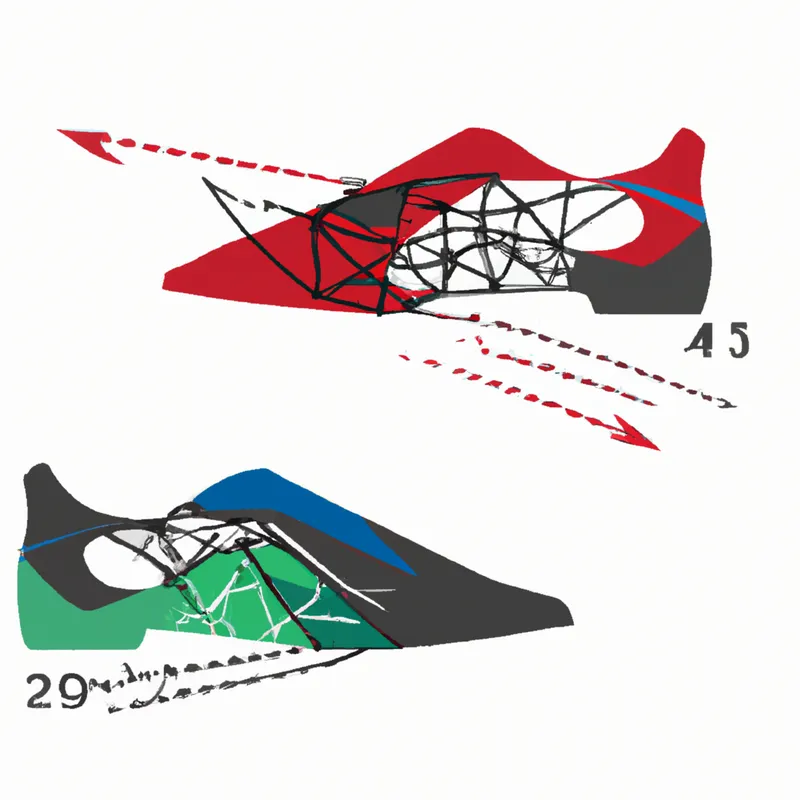Transform Sprinting: How Shoe Tech Revolutionizes Speed
The Impact of Footwear Technology on Sprinting Performance: A Comparative Study of Shoe Designs
Sprinting demands speed, power, and precision. Athletes seek technology to enhance their performance, especially in footwear. Advances in shoe design revolutionize sprinters’ training and competition. This blog explores shoe designs, their effects on performance, and the science behind modern footwear technology.
Understanding Footwear Technology
Modern sprinting shoes use innovative materials and engineering to improve traction, reduce weight, and enhance energy return. Many brands utilize lightweight synthetic fabrics for breathability and support. These materials enhance comfort and ensure a snug fit, crucial for stability during high-speed movements.
Sprinting shoe soles often feature advanced cushioning systems that absorb impact. This cushioning prevents fatigue and allows athletes to focus on speed without worrying about joint stress. Carbon-fiber plates in shoe soles generate significant interest. These plates provide a spring-like effect, propelling athletes forward efficiently with each stride.
Types of Sprinting Shoes
Several types of sprinting shoes exist, each serving a specific purpose and offering unique benefits. Here are the main categories:
1. **Spikes**: These shoes have metal or plastic spikes on the outsole, providing optimal traction. The grip enhances acceleration, allowing sprinters to generate speed effectively. Spikes are lightweight and designed for maximum speed, making them ideal for competitive races.
2. **Training Shoes**: Athletes use these shoes for practice rather than competition. Training shoes offer more cushioning and support than spikes, essential for preventing injuries during intense workouts. They provide versatility on various surfaces, including asphalt and turf.
3. **Hybrid Shoes**: These combine features of spikes and training shoes. Hybrid designs offer flexibility and traction, making them versatile for sprinters. They perform well on different surfaces, suitable for athletes training in varied environments.
Key Features of High-Performance Shoes
When evaluating sprinting shoes, several key features impact performance:
– **Weight**: Lightweight shoes reduce energy expenditure for each stride. Athletes maintain speed over longer distances. The lighter the shoe, the less effort needed to lift it, which proves crucial during a sprint.
– **Cushioning**: Effective cushioning absorbs shock during impact, reducing joint stress and helping athletes maintain sprinting form. Advanced materials like EVA foam or gel-based cushioning offer varying support and impact absorption levels.
– **Fit**: A snug fit prevents foot movement inside the shoe, crucial during explosive sprints.
Conclusion
Footwear technology greatly influences sprinting performance. Modern designs enhance speed, comfort, and safety for athletes.
Below are related products based on this post:
FAQ
What are the main types of sprinting shoes and their purposes?
The main types of sprinting shoes include spikes, training shoes, and hybrid shoes. Spikes are designed for competitive races, providing optimal traction and lightweight performance. Training shoes offer more cushioning and support for practice sessions, helping to prevent injuries. Hybrid shoes combine features of both spikes and training shoes, offering versatility for various surfaces during training.
How does footwear technology improve sprinting performance?
Footwear technology enhances sprinting performance through innovative materials and engineering. Modern shoes feature lightweight fabrics for breathability and support, advanced cushioning systems to absorb impact, and carbon-fiber plates that create a spring-like effect to propel athletes forward. These advancements help reduce fatigue, improve traction, and maintain speed during high-intensity sprints.
What key features should athletes consider when choosing sprinting shoes?
Athletes should consider several key features when choosing sprinting shoes: weight, cushioning, and fit. Lightweight shoes minimize energy expenditure, while effective cushioning absorbs shock and reduces joint stress. A snug fit is essential to prevent foot movement inside the shoe, which is crucial for maintaining sprinting form during explosive movements.















Post Comment